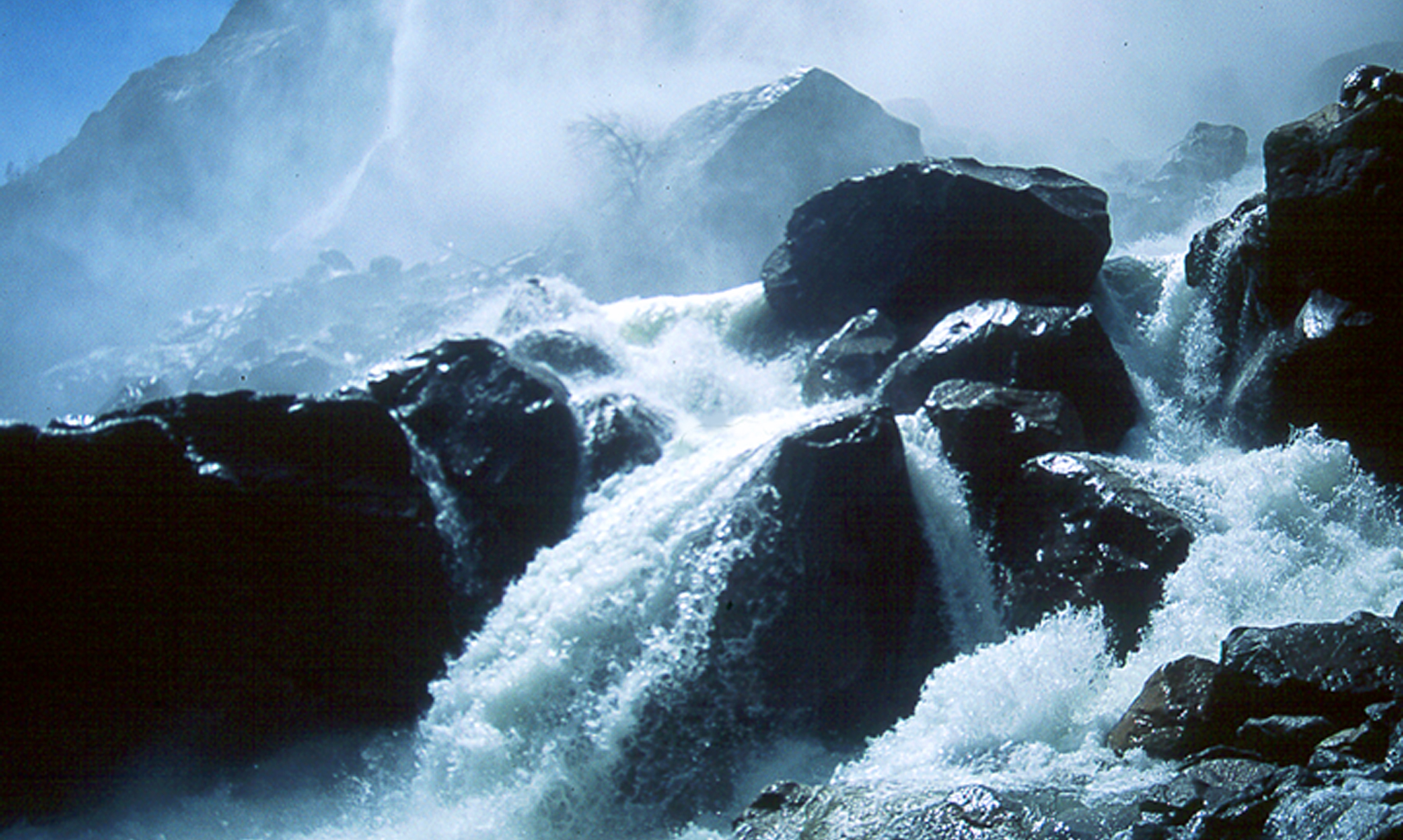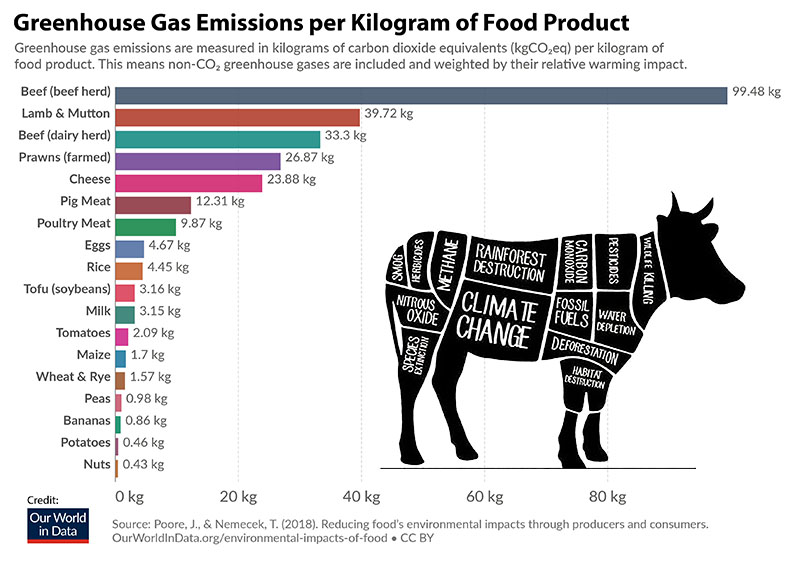We need to talk about climate change. You probably don’t need convincing that climate change is real and a crisis. Heatwaves—the number one weather-related killer in the U.S.—are more frequent and intense, droughts are longer, fire seasons are more severe, storms are more intense, there is less ice and snow cover, sea level is rising, and oceans are acidifying. All this is happening now, not in some distant future, and it’s hurting most those who did the least to cause it—the poor and marginalized here and around the world.
Many people get it. The problem is urgent. But they don’t know what to do about it. Climate change can seem too big to tackle or too depressing to think about. Others feel they have no control over what politicians and big organizations do. Some think that nothing we do at this point matters because the planet is already locked into a hellish future.
The good news is that scientists believe that if we stop emitting carbon, temperatures should stabilize fairly quickly. And there are things we all can do to limit climate change – both in pushing for change at a policy level and acting at an individual level.
So what can you do? We, the Climate Action Committee of the Tuolumne Chapter of the Sierra Club, will be publishing a series of articles, here and in future emails and newsletters, about what we can all do right here and now, in the Motherlode, to help tackle the climate crisis. We are going to talk about climate change solutions, and how you can be a part of them. We hope to inspire you to act and to feel connected to a committed, growing community that cares.
Start Talking!
One thing you can do about climate change right now is to talk about it. Yes, just talk about it. It turns out that more than 7 in 10 Americans believe climate change is happening, 6 in 10 are worried about it, but two-thirds of Americans rarely, if ever, talk about climate change with the people they care about. Surveys show that only about 35% of Americans discuss global warming at least occasionally, and only 25% hear about it in the media once a week.
So if most of us are worried about climate, why aren’t we talking about it more? Typically, it’s because we feel we “don’t know enough,” “don’t want to talk about scary things,” “it won’t make a difference,” or we “don’t want to cause an argument.”
That is a problem. We humans are highly social. Researchers have found that people tend to believe what those around them believe. Talking about climate change signals to our friends and neighbors that climate change is real and is a priority. Once they see that climate is important enough for you to talk about and act on, it’s easier for them to believe it is real, talk about it with others, and act on it, even when you are not around. This helps spread awareness and raise concern to the society-wide levels that attract the attention of policymakers and the media.
There is lots of evidence that social behavior is contagious. For example, one of the best predictors of whether people will install solar panels isn’t age, race, income, or political affiliation, but whether their neighbors have solar. Another study found that half of respondents who knew someone who gave up flying because of climate change said that they fly less because of that example. Those influenced by a “non-flyer” explained that the bold position to give up flying had: conveyed the seriousness of climate change and flying’s contribution to it; crystallized the link between values and actions; and even reduced feelings of isolation that flying less was a valid and sensible response to climate change. Read about it here. This kind of contagious talking and acting on climate change is necessary to make change on a large scale.
You’re Ready, But What Do You Say?
The most important thing is to start by talking about why it matters to you. This could be a personal story about how climate change affects you or those you love, or an appeal to shared values or things you have in common with someone, such as parenthood, faith, etc., and why that should lead to caring about a changing climate. (hayhoe) This also means listening, so you know what the other person cares about and how you can connect with them.
Talking about the underlying science of what causes climate change is generally unnecessary since around two thirds of the US public already believe in climate change or worry about it. The challenge, then is usually not awareness, but inspiring people to act.
Start with undisputed facts. When talking with someone who is unaware or unsure, you don’t need tons of data. You can communicate the science of climate change with some undisputed facts.
The physics of climate change have been understood for 150 years: carbon dioxide released by burning fossil fuels trap heat in the atmosphere, heating up the earth.
Since we began burning fossil fuels, carbon dioxide levels have increased far beyond any level in the last 800,000 years, and global average temperatures have already increased by 1°C, an increase that leads to a dramatic rise in the number of extremely hot days.
We need to make big changes right now to keep temperature rises below dangerous levels.
Create Urgency by Talking About What’s Already Happening.
Climate change isn’t some awful possibility that might occur in the distant future. It’s here already. For example, the seven warmest years in the 1880–2020 record have all occurred since 2014, while the ten warmest years have occurred since 2005. Extreme weather such as heatwaves, droughts and heavy rainfall are increasing in frequency due to climate change. Here in California, wildfires have increased in size by eight times and the number of acres burned has increased by 500% since 1970.
Make Climate Projections Personal and Concrete.
Climate projections are typically stated in averages, which mask the variability in impacts. For example, if we carry on emitting as we are now, in the Motherlode, we can expect that the Sierra Nevada snowpack, which feeds most of our water reservoirs, will decrease by 64% by 2100. Increased warming will continue to suck moisture out of forests, rangelands, and soils, leaving us even more vulnerable to fire. And, by around 2070 we can expect approximately 67 days of temperatures above 100.0 F, despite only having 15 such days from 1961-1990.
Namedrop.
Thousands of prominent scientists, economists and businesses acknowledge the reality of human induced climate change. The world’s biggest oil and gas companies acknowledge the reality of human-induced climate change. Investors are asking the CEOs of companies to consider the impact of their operations on climate change and the environment. Experts and decision-makers across the world, say climate change is the biggest risk facing them (and have done for many years). Insurance companies understand that climate change brings tremendous risks.
Share Ideas for Making an Impact.
Finally, when you talk about climate change, you can give people ideas for what they can do about it. Talking about it is meaningful. Voting and encouraging others to vote for candidates who care about climate change is meaningful. Joining organizations that are working on climate change is meaningful. Opportunities are endless, and in this series, we are going to talk, and talk, and talk to you about what you can do and how it helps. Thank you for listening.
For more detail, see: https://www.weforum.org/agenda/2018/06/how-to-talk-about-climate-change-5-tips-from-the-front-lines

